| Feature | Description |
|---|---|
| Purpose | To show a student’s achievement on CAASPP System assessments to parents/guardians, students, and teachers. |
| Format |
The CAASPP SSR for the Smarter Balanced Summative Assessments for ELA and mathematics consists of two two-sided pages:
|
| Action | Pursuant to 5 CCR Section 863, LEAs must notify parents/guardians and make SSRs available within 20 working days of their delivery to the LEA in TOMS. If the LEA receives the SSRs after the last day of instruction for the school year, the LEA shall make the SSR available to the parent/guardian no later than the first 20 working days of the next school year. |
| Focus | Individual student’s results for ELA and mathematics |
Data displayed on the samples in this guide are for demonstration purposes only and may not reflect valid data. Sample SSRs may include minor variances from actual SSRs.
Description
SSRs for the Smarter Balanced Summative Assessments for ELA and mathematics provides parents/guardians and teachers with the student’s results.
Data presented for the Smarter Balanced Summative Assessments for ELA and mathematics taken includes the following:
- Scale scores
- Achievement levels:
- Standard Exceeded
- Standard Met
- Standard Nearly Met
- Standard Not Met
- Scale scores and achievement levels for two previous years’ assessments (if available)
Example SSR
CAASPP Smarter Balanced SSRs feature colored bar graphs representing the four achievement levels are in the following order from top to bottom:
- Standard Exceeded (Level 4) (blue)
- Standard Met (Level 3) (green)
- Standard Nearly Met (Level 2) (yellow)
- Standard Not Met (Level 1) (orange)
Because each assessment is aligned with a specific set of academic standards, scores cannot be compared between assessments for different content areas (for example, between the ELA and mathematics assessments) or between the CAASPP and tests administered previously in California (such as for the Standardized Testing and Reporting Program).
Score ranges for each achievement level are different for each grade level, and the standards for the next grade level are more challenging than for the previous grade level. As a result, an increase in the overall scale score may not mean a higher achievement level for the current year.
Under certain circumstances, such as when a test was invalidated or when results are associated with a condition code, a message will appear on the SSR. Possible messages, their associated condition codes, and the applicable content area assessment—either ELA or both ELA and mathematics—are presented in table 1. Refer to the Condition Code Descriptions section in Interpreting Results for information about when a condition code applies.
| Content Area | Condition Code | Message |
|---|---|---|
| Both | LOSS | If a LOSS condition code is applied to a student’s result, the LOSS is accompanied by a footnote: [Student’s name]’s scores should be used with caution as the test was administered under conditions that may not represent [Student’s name]’s achievement.” |
| ELA | NEL | [Student’s name] was exempt from taking the English language arts/literacy assessment during this school year. |
| Both | NS | [Student’s name] did not complete the [content area] assessment. For additional information, please contact [Student’s name]’s teacher(s) or school. |
| Both | NT | [Student’s name] did not take the [content area] assessment. For additional information, please contact [Student’s name]’s teacher(s) or school. |
| Both | NTE | [Student’s name] did not complete the [content area] assessment because of a medical emergency. |
| Both | PGE | [Student’s name] did not complete the [content area] assessment because of a parent/guardian exemption. |
Page 1 of 4, Top: Student Information
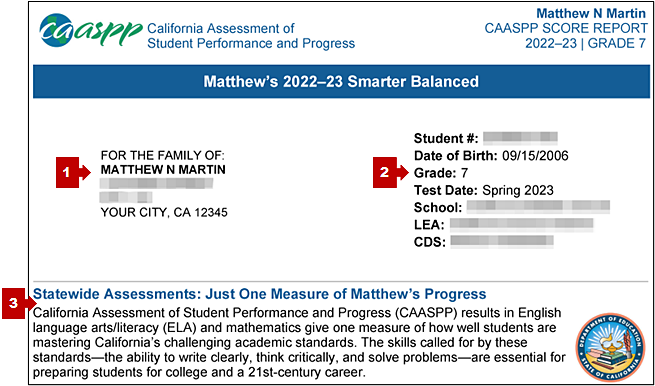
Figure 1. Student information on page one of the CAASPP Smarter Balanced SSR
| # | Feature | Description |
|---|---|---|
| 1 | Student’s mailing address | This area shows the student’s residential address as listed in CALPADS. |
| 2 | Student and school information |
This area shows information about the student and the school and LEA name, as well as the county/district/school code. Note that the grade noted indicates the grade level in which the student was enrolled at the start of testing. |
| 3 | CAASPP results overview | This paragraph provides an overview of the purpose of CAASPP results. |
Page 1 of 4, Bottom: Score Overview
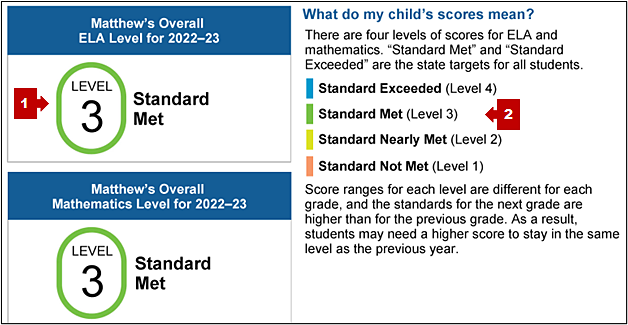
Figure 2. Score overview on page one of the CAASPP Smarter Balanced SSR
| # | Feature | Description |
|---|---|---|
| 1 | Content area achievement level | This box provides the student’s achievement level for a CAASPP Smarter Balanced content area. |
| 2 | Achievement levels | This area lists the CAASPP Smarter Balanced achievement levels. |
| 2 | College Readiness (Not shown) |
Students in grade eleven will be presented with a statement like the following: The CAASPP provides an early indicator of [Student name]’s readiness for college-level English and mathematics courses. For more information on how the CSU uses the results for college placement, go to the CSU Student Success website. |
Early Assessment Program for Grade Eleven
The EAP is a joint program of the CDE and CSU. The EAP provides students at the end of grade eleven with an early indication of their readiness for college-level English and mathematics prior to starting their senior year. Refer to the CDE Early Assessment Program web page for additional information about this program.
The note after the progress summary on page one for a grade eleven student provides a brief explanation of the EAP with a web address for the student to use for more information about college steps to take in grade twelve to be ready for college.
The “College Readiness” section on page one and the “Parent/Guardian Resources” section on page four of the grade eleven SSR also include the web address of the CSU Success website.
Pages 2 and 3 of 4, Sample Content Area Section, Top: Content Area Summary
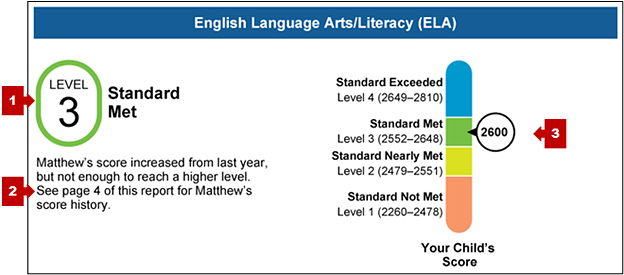
Figure 3. Content area section (top) from the CAASPP Smarter Balanced SSR
| # | Feature | Description |
|---|---|---|
| 1 | Score summary | This indicator summarizes the student’s achievement level for the content area. If the student did not test, the achievement level number and label are replaced here with “Not Tested.” |
| 2 | Progress summary | This paragraph describes the student’s progress based on the student’s achievement level for the content area. Summaries are listed in the Progress Summary Text subsection. |
| 2 |
Not tested (Not shown) |
If present, additional text will be included in the progress summary section for the content area if the student did not receive a score, either because the student did not take the assessment, because the student was exempt from taking an ELA assessment, or because the student logged on but answered no items. |
| 2 |
Special condition (Not shown) |
A cautionary message also will be included under the progress summary for one of the following reasons:
|
| 3 | Score ranges | A chart provides data for the student’s current achievement level and overall scale score. |
Progress Summary Text
For students in grades three through eight or grade eleven, possible outcomes include noting that the student exceeded, met, nearly met, did not meet the grade level’s standard; and comparing the current-year’s outcome with a previous year’s outcome and noting whether the student stayed within the previous year’s achievement level.
If a school opted to administer a local assessment in lieu of the Smarter Balanced Assessments for ELA and mathematics in 2020–21, the aggregated results of the local assessment were reported in the School Accountability Report Card, not on the Test Results for California’s Assessments website.
Page 4, Top: Score History for the Smarter Balanced Summative Assessments, Grades Four Through Eight

Figure 4. Score history on page four of the CAASPP Smarter Balanced SSR
| # | Feature | Description |
|---|---|---|
| 1 | Content area | The bar over the historical scores indicates the content area being reported. |
| 2 | Previous-year’s score(s) (grades four through eight SSRs only) | The leftmost and middle level numbers corresponding with the accompanying scale score and achievement level label for the grade-level content-area test taken during a previous CAASPP administration. |
| 3 | Current-year’s score | The rightmost graph represents the student’s scale score and achievement level for this year. |
Page 4, Bottom: Additional Information
Note that this information may also appear at the top of page 4 for all students in grades three and eleven and if there is no historical score information reported for the student. For grade eleven, information about an additional resource for the EAP also is included.

Figure 5. Additional information on page four of the CAASPP Smarter Balanced SSR
| # | Feature | Description |
|---|---|---|
| 1 | Starting Smarter website information | This section describes the Smarter Balanced Starting Smarter website, which describes SSRs and other information that supports student learning. |
| 2 | CAASPP results website information | This section describes the Test Results for California’s Assessment website on which results for schools, districts, and the state are found. |
| 3 | CAASPP/Early Assessment Program website information | This section describes the CAASPP/Early Assessment Program website on which additional information about the EAP is found. |
Sample of the SSR for Smarter Balanced ELA and Mathematics
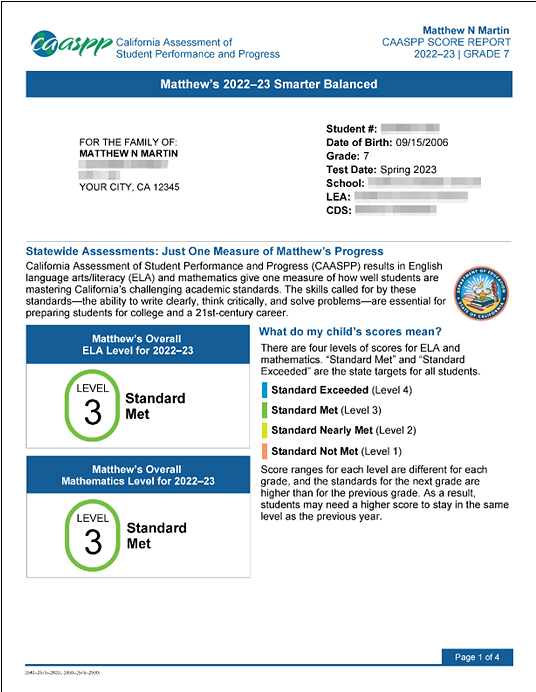
Figure 6. Sample CAASPP Smarter Balanced SSR, page one
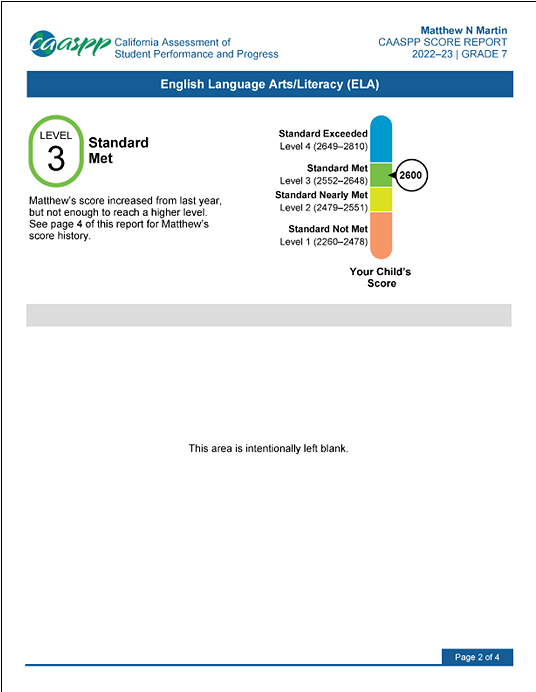
Figure 7. Sample CAASPP Smarter Balanced SSR, page two
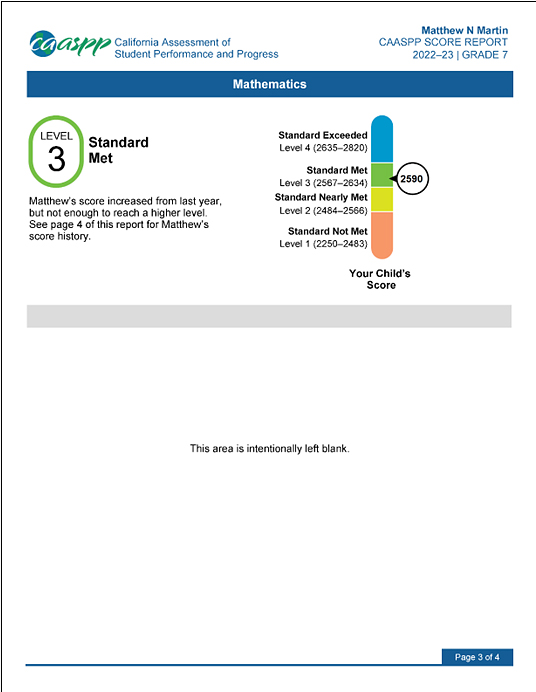
Figure 8. Sample CAASPP Smarter Balanced SSR, page three
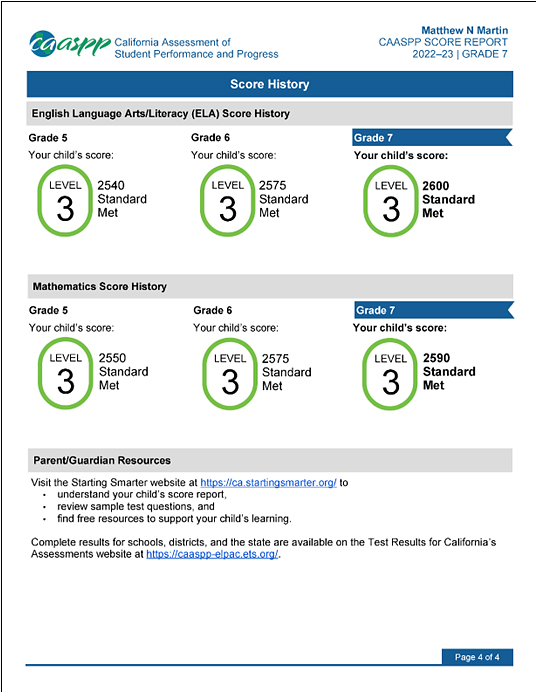
Figure 9. Sample CAASPP Smarter Balanced SSR, page four

